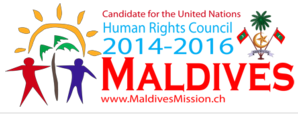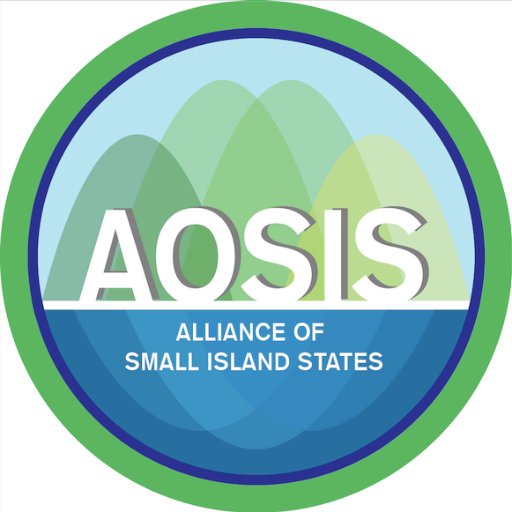High Level Segment of ECOSOC
Thematic Dialogue on "Sustainable Infrastructure for All"
Statement by His Excellency Mr Thoriq Ibrahim, Minister of Environment and Energy
New York, 21 July 2016
Dear Excellencies and colleagues,
I am honoured to have the opportunity to participate in this High Level Segment panel debate on Infrastructure. The theme of "infrastructure for sustainable development for all" is a timely topic in need of great discussion and action.
Infrastructure is a key component of our global frameworks and agendas, from the 2030 Agenda for Sustainable Development, to the Sendai Framework for Disaster Risk Reduction, and the Addis Ababa Action Agenda. Looking first to the sustainable development goals, the need for quality and resilient infrastructure is made clear as Goal 9 centers around the objective to build resilient infrastructure. That said, infrastructure is a cross-cutting issue, with it also mentioned in reference to food security, gender equality, and energy.
As the Addis Ababa Action Agenda clearly outlines, the infrastructure gap is vast - from $1 trillion to $1.5 trillion per year in developing countries - and in order to solve this gap, developing countries will require not only financial support, but also technical capacity building.
This infrastructure gap is felt particularly in Small Island Developing States (SIDS). The SAMOA Pathway speaks to this need for improved infrastructure in SIDS, a challenge that exists across multiple sectors with improvements and development required in transportation, water and energy, as well as information and communications technology. All of these sectors and more, require effective infrastructure. Without functioning infrastructure, it is increasingly difficult to achieve sustainable economic prosperity. Therefore, it is vital that investment in new sustainable and resilient infrastructure be a priority moving forward.
Infrastructure is of specific concern for the Maldives, as well as other SIDS, due to the challenges we face around connectivity. Having 200 inhabited islands poses numerous obstacles to providing services, economic opportunity, and transporting goods over such a large territory. In addition, being sea locked means our population relies heavily on transportation infrastructure to access goods and services, from healthcare to food.
The challenges posed by natural disasters, which are of increasing frequency and intensity, as well as the many other impacts of climate change, underline our need for all infrastructure to be constructed with resilience as a central priority. The Sendai Framework, as well as the 2030 Agenda, cite this need, as infrastructure needs to have the capacity to handle our environmental challenges. Without consider resilience, ongoing damage to infrastructure services to undermine efforts towards development by redirecting already limited resources towards continual repairs.
Moving forward, we need private and public sectors to collaborate through joint infrastructure development projects. There needs to be national ownership, while also interested partnerships to engage and offer investment and capacity necessary as often holding SIDS back from infrastructure improvements are not only financial constraints, but also the human capacity, physical resources, and knowledge or tools. Creating an enabling environment at the national and regional levels for public-private investment in building and maintaining resilient infrastructure is key.
That said, private financing remains difficult to procure, as SIDS are often identified as high risk countries. As a middle income country, the Maldives is ineligible for concessionary financing. Yet, this categorization does not account for many structural vulnerabilities beyond income, nor the high costs of development in more rural areas, or the limited abilities of many SIDS to mobilize sufficient domestic resources. As such, while SIDS want to embrace long term resilient infrastructure projects, they remain out of reach without international assistance and we urge support in order to access a greater diversity of investment and financing options.
One such solution will be new partnerships and SIDS are taking the lead with the SIDS Action Platform and Partnership Framework to create and follow new global opportunities for cross-engagement.
For example, R. Maduvvari in the Maldives is the site of one of the first projects to be financed by the Green Climate Fund (GCF). This project, which will start on R. Maduvvari and expand to at least 48 other remote islands (with a combined population of over 100,000 people), relies on an integrated water management approach: scaling up rainwater collection and storage; improving groundwater quality; and streamlining water distribution networks. This new infrastructure is expected to bring water independence to the communities and saving hundreds of thousands of dollars annually (not too mention emissions). Of note is how this partnership between the Maldives and the GCF fits into the Maldives' long-term climate change adaptation plan, which includes strict zoning regulations to keep coastal communities safe and strengthening infrastructure against erosion, rising seas and other impacts.
In conclusion, we cannot achieve sustainable development without also enabling development of sustainable, resilient, quality infrastructure from energy and transportation infrastructure, to ICT and infrastructure supporting food, water and sanitation.



